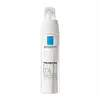What's inside
What's inside
 Key Ingredients
Key Ingredients

 Benefits
Benefits

 Concerns
Concerns

 Ingredients Side-by-side
Ingredients Side-by-side

Water
Skin ConditioningGlycerin
HumectantSqualane
EmollientPropanediol
SolventButylene Glycol
HumectantButyrospermum Parkii Butter
Skin ConditioningPentylene Glycol
Skin ConditioningDimethicone
EmollientPolymethylsilsesquioxane
Polysorbate 20
EmulsifyingGlyceryl Acrylate/Acrylic Acid Copolymer
HumectantDimethiconol
EmollientAluminum Starch Octenylsuccinate
AbsorbentAmmonium Polyacryloyldimethyl Taurate
Emulsion StabilisingDisodium EDTA
Acetyl Dipeptide-1 Cetyl Ester
Skin ConditioningWater, Glycerin, Squalane, Propanediol, Butylene Glycol, Butyrospermum Parkii Butter, Pentylene Glycol, Dimethicone, Polymethylsilsesquioxane, Polysorbate 20, Glyceryl Acrylate/Acrylic Acid Copolymer, Dimethiconol, Aluminum Starch Octenylsuccinate, Ammonium Polyacryloyldimethyl Taurate, Disodium EDTA, Acetyl Dipeptide-1 Cetyl Ester
Water
Skin ConditioningC12-15 Alkyl Benzoate
AntimicrobialDicaprylyl Carbonate
EmollientDiisopropyl Adipate
EmollientGlycerin
HumectantMethylene Bis-Benzotriazolyl Tetramethylbutylphenol
UV FilterBis-Ethylhexyloxyphenol Methoxyphenyl Triazine
Skin ConditioningDiethylhexyl Butamido Triazone
UV AbsorberPolymethyl Methacrylate
Butyl Methoxydibenzoylmethane
UV AbsorberButyrospermum Parkii Butter
Skin ConditioningMethyl Gluceth-20
HumectantIsocetyl Stearoyl Stearate
EmollientTriethylhexanoin
MaskingHydrogenated Starch Hydrolysate
HumectantC10-18 Triglycerides
EmollientGlyceryl Stearate
EmollientPEG-100 Stearate
Potassium Cetyl Phosphate
EmulsifyingBenzoic Acid
MaskingCaprylic/Capric Triglyceride
MaskingCaprylyl Glycol
EmollientDecyl Glucoside
CleansingDisodium EDTA
Parfum
MaskingGlyceryl Behenate
EmollientGlyceryl Dibehenate
EmollientPhytosterols
Skin ConditioningPolyacrylate-13
Polyisobutene
Polysorbate 20
EmulsifyingPropylene Glycol
HumectantSorbitan Isostearate
EmulsifyingStearyl Alcohol
EmollientTocopherol
AntioxidantTocopheryl Glucoside
EmollientTribehenin
EmollientXanthan Gum
EmulsifyingWater, C12-15 Alkyl Benzoate, Dicaprylyl Carbonate, Diisopropyl Adipate, Glycerin, Methylene Bis-Benzotriazolyl Tetramethylbutylphenol, Bis-Ethylhexyloxyphenol Methoxyphenyl Triazine, Diethylhexyl Butamido Triazone, Polymethyl Methacrylate, Butyl Methoxydibenzoylmethane, Butyrospermum Parkii Butter, Methyl Gluceth-20, Isocetyl Stearoyl Stearate, Triethylhexanoin, Hydrogenated Starch Hydrolysate, C10-18 Triglycerides, Glyceryl Stearate, PEG-100 Stearate, Potassium Cetyl Phosphate, Benzoic Acid, Caprylic/Capric Triglyceride, Caprylyl Glycol, Decyl Glucoside, Disodium EDTA, Parfum, Glyceryl Behenate, Glyceryl Dibehenate, Phytosterols, Polyacrylate-13, Polyisobutene, Polysorbate 20, Propylene Glycol, Sorbitan Isostearate, Stearyl Alcohol, Tocopherol, Tocopheryl Glucoside, Tribehenin, Xanthan Gum
 Reviews
Reviews

Ingredients Explained
These ingredients are found in both products.
Ingredients higher up in an ingredient list are typically present in a larger amount.
This ingredient is also known as shea butter. It is an effective skin hydrator and emollient.
Emollients help soothe and soften your skin. It does this by creating a protective film on your skin. This barrier helps trap moisture and keeps your skin hydrated. Emollients may be effective at treating dry or itchy skin.
Shea butter is rich in antioxidants. Antioxidants help fight free-radicals, or molecules that may harm the body. It is also full of fatty acids including stearic acid and linoleic acid. These acids help replenish the skin and keep skin moisturized.
While Shea Butter has an SPF rating of about 3-4, it is not a sunscreen replacement.
Shea butter may not be fungal acne safe. We recommend speaking with a professional if you have any concerns.
Learn more about Butyrospermum Parkii ButterDisodium EDTA plays a role in making products more stable by aiding other preservatives.
It is a chelating agent, meaning it neutralizes metal ions that may be found in a product.
Disodium EDTA is a salt of edetic acid and is found to be safe in cosmetic ingredients.
Learn more about Disodium EDTAGlycerin is already naturally found in your skin. It helps moisturize and protect your skin.
A study from 2016 found glycerin to be more effective as a humectant than AHAs and hyaluronic acid.
As a humectant, it helps the skin stay hydrated by pulling moisture to your skin. The low molecular weight of glycerin allows it to pull moisture into the deeper layers of your skin.
Hydrated skin improves your skin barrier; Your skin barrier helps protect against irritants and bacteria.
Glycerin has also been found to have antimicrobial and antiviral properties. Due to these properties, glycerin is often used in wound and burn treatments.
In cosmetics, glycerin is usually derived from plants such as soybean or palm. However, it can also be sourced from animals, such as tallow or animal fat.
This ingredient is organic, colorless, odorless, and non-toxic.
Glycerin is the name for this ingredient in American English. British English uses Glycerol/Glycerine.
Learn more about GlycerinPolysorbate 20 is made by combining ethoxylation of sorbitan, ethylene oxide, and lauric acid. It is a mild cleansing agent, surfactant, and emulsifier.
As a surfactant, it helps collect dirt and oils for washing. Emulsifiers prevent oils and water from separating.
Polysorbate 20 also adds scent to a product. Since it is made using sorbitol, it has a sweet scent. Sorbitol can also be found in fruits such as apples and peaches.
The lauric acid used to create Polysorbate 20 is often derived from coconuts.
Polysorbate 20 may not be fungal acne safe.
Learn more about Polysorbate 20Water. It's the most common cosmetic ingredient of all. You'll usually see it at the top of ingredient lists, meaning that it makes up the largest part of the product.
So why is it so popular? Water most often acts as a solvent - this means that it helps dissolve other ingredients into the formulation.
You'll also recognize water as that liquid we all need to stay alive. If you see this, drink a glass of water. Stay hydrated!
Learn more about Water